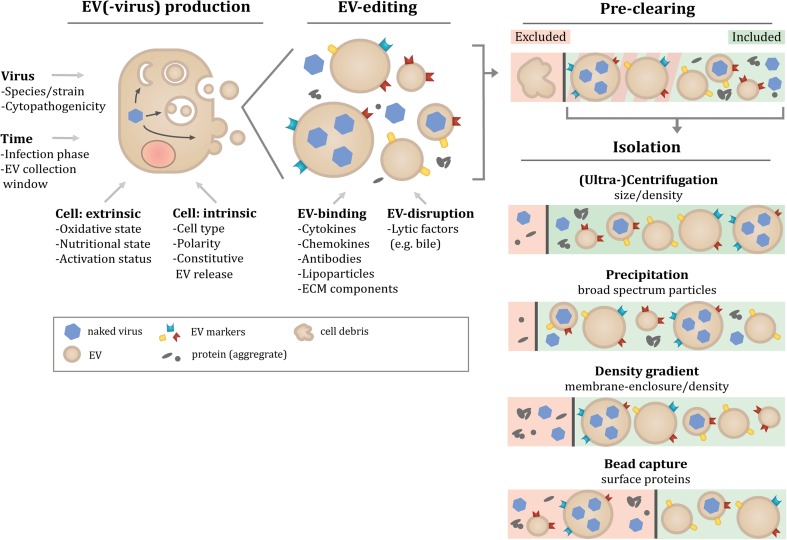Fig. 1.
Multiple factors can influence the composition of EV-virus isolates. The figure presents a schematic overview of factors identified in the EV- and EV-virus-fields that affect the molecular composition of EV isolates. First, EV(-virus) production itself can vary based on factors relating to the producing cell, including the nature of the cell (intrinsic factors) and its environmentally determined condition (extrinsic factors). Upon infection, these factors coalesce with the properties of the virus in a time-sensitive manner to govern the production and release of virions, EV-virus, and other EV by the infected cell. Secondly, the heterogeneous population of released EV can undergo 'EV-editing' by engaging with factors encountered in the extracellular environment. These factors can either bind to or disrupt EV membranes to modify the existing particles. Additional variation in the composition of EV isolates is introduced during isolation and purification steps. Depending on the centrifugal force applied in pre-clearing steps to remove cell debris, subsets of larger EV may either be depleted in this step or may be co-isolated in subsequent steps. The different techniques applied to isolate EV-virus are based on different principles related to physical, affinity or biochemical characteristics of EV. These EV isolation techniques therefore differ in the efficiency with which EV can be separated from contaminating naked virions and protein aggregates, or may specifically enrich for certain EV subtypes

